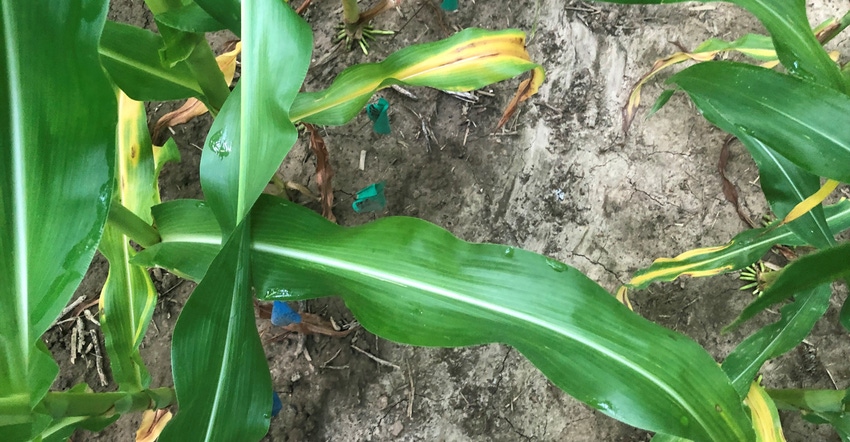
Heavy rains in June and early July in some areas and too much rain over too short a period in other areas is showing up as nitrogen deficiency in some fields. If the whole field is affected, it may be obvious. In other cases, it may be worth a walk to the wetter spot of a field to check for signs of nitrogen deficiency. This might be a good time to fly a drone over the field.
Even the Corn Watch ’21 field isn’t immune. Nitrogen was applied before planting, and most of the field was in great shape heading into early July. However, while the field has older tile draining certain areas, it isn’t pattern-tiled. Excess rain in late June resulted in some uneven heights and a lighter color in a few pockets where soils may hold water longer.
Related: The case for increasing corn seeding rate
Dave Nanda, director of genetics for Seed Genetics Direct, sponsor of Corn Watch ’21, says the purpose of this project where he monitors a field each year is to pick up on these types of trends that may develop during the season. If it happens in this field, perhaps it is happening in your fields, depending on whether you have experienced similar weather patterns.
Watch for signals
Two main symptoms that corn may be running short on nitrogen include firing of leaves and a paler color. During scouting in early July in the Corn Watch ’21 field, just before tassels began emerging, most of the field featured corn with dark green leaves from top to bottom. However, in spots that were somewhat shorter and paler earlier after wet spells, the corn was a paler green.
There were also classic signs of firing on leaves, especially lower leaves. When plants run short on nitrogen, leaves turn yellow to brown, beginning at the tip of the leaf and running back along the midrib. The Purdue University Corn & Soybean Field Guide illustrates nitrogen deficiency with a picture, and also describes it in detail.
Nanda says nitrogen may have been lost in these spots either from denitrification or leaching of nitrate below the root zone where plants can obtain it. Whether it’s worth just noting or taking action can depend upon several factors, including how big of an area is affected, how many pockets like it are within the field, the price of corn, the price of nitrogen and whether field conditions are suitable for making an application.
If an entire field or most of a field is suffering and showing typical symptoms of nitrogen deficiency by tasseling time, making the decision is easier, Nanda says. It would likely pay if you have the equipment to make a late-season application or can hire someone to do it at a reasonable price per acre.
The tougher call is in fields like the Corn Watch ’21 field, where most of the field appears to be in good shape, but there are small, scattered pockets running short on N. Tissue samples were pulled from various sections of the field at the V10 or 10-leaf stage in late June, and while some nitrogen values were somewhat low, they would not have indicated a nitrogen shortage this early. However, the scattered spots with shorter, paler corn were avoided during sampling because they didn’t represent the bulk of the field. Costs of tissue sampling are covered courtesy of Ceres Solutions.
About the Author(s)
You May Also Like




